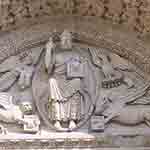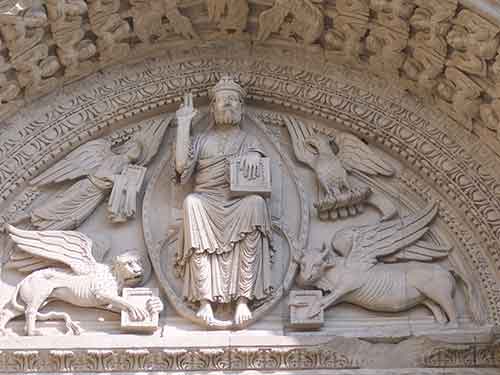Following yesterday’s post, and the helpful comment, I thought (in the digital practice of “Throwback Thursday” but for Year B rather than C) to adapt a previous blog post.
The church’s new year begins on Advent Sunday, December 3. In the three year lectionary, the focus is on St Mark’s Gospel.
In your community, and in your own life, has planning been underway how to best make use of this year’s lectionary? It is just plain stubbornly irritating, especially if your denomination (like mine) has agreed we will together use the lectionary, to abandon it for a “teaching series” on the letter to the Galatians in 2018, for example, when the lectionary wonderfully provides for such a series in 2019.
It is just as irritatingly obstinate should such a pastor or community next year do a series on the letter to the Ephesians early in 2018, abandoning the series the lectionary sets for us all from July 15 to August 26. Plan!
Ordinary time begins (Northern Winter; Southern Summer) with the second reading being semicontinuously from 1 Corinthians – that continues with the second letter to the Corinthians on into July.
From Ash Wednesday through the Day of Pentecost there are several readings from John supplementing Mark. [And again, through late July and August].
During the season of Easter, semicontinuous selections are read from the First letter of John.
Ordinary Time after Pentecost (Northern Summer & Autumn; Southern Winter & Spring) has semicontinuous readings working through 1 and 2 Samuel and then 1 Kings – what Christians call “historical books” but which Jews call Nevi’im or prophets. The other set of readings is selected from throughout the Hebrew Scriptures for their association with the gospel of the day. The second readings are semicontinuous selections from 2 Corinthians, Ephesians, James, and Hebrews.
As usual, the final Sundays in Ordinary Time focus on eschatological themes and the reign of Christ.
If you have not been using the three year Revised Common Lectionary, might this be your year to begin? Especially if you have agreed, vowed, and signed that this is what you will do (as I have)! If you have been reducing the number of readings provided, might this be the year to lessen a bit of your own stuff, and gather, as a community, around the fuller provision of three readings and a psalm.
The devil, Screwtape, rejoices that the vicar
has undermined many a soul’s Christianity. His conduct of the services is also admirable. In order to spare the laity all “difficulties” he has deserted both the lectionary and the appointed psalms and now, without noticing it, revolves endlessly round the little treadmill of his fifteen favourite psalms and twenty favourite lessons. We are thus safe from the danger that any truth not already familiar to him and to his flock should ever reach them through Scripture. The Screwtape Letters Chapter XVI C.S. Lewis
This is not some clarion call for liturgical rubrical fundamentalism! This is an invitation and challenge. Liturgy, worship is not, should not be, the personal possession of the pastor. It is the common prayer of us all. Laity are not just consumers of the pastor’s provision! Of course there will be (rare) contexts when the set readings are just not appropriate for that particular service. Of course there will be (rare) contexts where cutting the readings back to two and a psalm is the best decision. But, even looking around local churches that have abandoned their agreement and construct their own reading system, I have yet to see one of them which improves on what we have agreed to.
If you appreciated this post, consider liking the liturgy facebook page, using the RSS feed, and/or signing up for a not-very-often email, …
image source
Arles, the church of St. Trophime – tympanum. The west portal presents the story of the Apocalypse. Christ is seated in majesty with the symbols of the Evangelists around him; the angel of St. Matthew, the lion of St. Mark, the bull of St. Luke, and the eagle of St. John.





Amen to this! At our parish (Episcopal Church of The Ascension, Dallas), we follow the lectionary closely except for some Sundays when there’s no Children’s Chapel during the 10:15 Service, and the lectio continua is welcomed by most of us. Add to that a series of adult bible studies that devote three years to particular groups of books, and we find ourselves well prepared for what John Donne called “emergent occasions.” The practice has the additional benefit of enriching our prayer life—not an unintended consequence of having the daily offices and the lectionary set up as they are. Thank you, Abp. Cranmer, and thank successive generations of Churchmen (and women) who have built on your foundation!
Is there some liturgical-or otherwise-reason that the Name of Jesus is noticeably absent from a large section of the essays and homilies/sermons of priests?
Thanks, Franklin. I’m not sure how your comment connects to this encouragement to use the the three-year lectionary, other than that the Name of Jesus is noticeably absent from my post? I wrote today’s post prior to reading your comment – it has the Name Jesus 13 times in about 1100 words. I have never heard mention or noticed your suggestion for priests generally. Nor, without further explanation, can I make sense of it – do you mean they use “Christ” or “Our Lord”, and so on, instead? Blessings.
Dear Fr Bosco, maybe you won’t like my comment, but here is what has happened. Three kids have inherited their grandparents’ house. One of them would have liked to just leave the house that way, and use it, with no modern accomodation, for the sake of the dead grandparents. The second would have liked to modernise the old house a little bit, still keeping the structure, and to add two floors, so that there would be three floors: A (old, but consolidated), B & C (new), the floors B and C supplementing rooms with new functionalities, that the grandparents had not thought about; B and C would still repeat the structure of the ground floor; every one that knows where the kitchen and toilet are in the old house would be able to find them on floors B and C, because the pipes would go through all the floors, and thus connect them. Now there was the third kid, who just decided to distroy the old house, although inherited from many generations; he built three new floors according to his whims. Finally, he got kids when he was grown up, and some of his own children disliked all the choices he had made when he was young.
You write: «Liturgy, worship is not, should not be, the personal possession of the pastor. It is the common prayer of us all. Laity are not just consumers of the pastor’s provision!» Indeed. You may replace “pastor” by “international interdenominational commission” or whatever. The French Republicans, in their time, wished to turn everything in the base-ten: ten days a week, ten hours a day, ten months a year. But their sucessors went back to the old system. The human life does not turn round 3 years. So, if a 3-year artificial cycle of readings was needed, it should have kept the structure of the one-year cycle intact. For instance, if the XIIe Sunday after the Pentecost, the 1000-y.-old lectionary had the summary of the law according to Luke, that could have been kept for year A, alternating the similar passage in Matthew in year C, and according to Mark in year B. For instance. That would have really been a “common” lectionary, as partaken also with the Church of yesterday and ereyesterday. “Us all” is beyond and above one given generation.
Thanks, George.
Yes, we can critique both the process and the product. As far as I know, we do not have a shared (East-and-West) pre-Vatican II Eucharistic lectionary? Liturgy grows and develops both by imposition and by imitation.
A conversation during the week with an intelligent non-churchgoer highlighted the positive achievement: knowing the divided history of Christianity, this person was (rightly) amazed that this Sunday, in different denominations and different languages, all around the world we are reading essentially the same Gospel reading.
Blessings.
Indeed, there is so shared lectionary across the rites. However, there are shared patterns. The physical year as a cycle in its own is one of them. What I am saying is that if we have a cycle of 3 years, it has to become only variants of the one year cycle.
As for the Roman rite and what derives from it, now we have the following things: those who use the pre-Vat II lectionary; those who use the Sarum lectionary with one week shifted because of the Trinty week; those with the “common” lectionary, with all kinds of variants (revised, re-revised, re-re-re-revised according to denominational standards and so on). The fact that major denominations use some variants of one lectionary is praiseworthy; it is too bad that: 1. they have not the best option; 2. they are in exclusion of those who have traditional options, and therefore the problem is not solved.
This is one example of how liturgy “ungrows” when imposed from above. Only organic liturgy really lasts. And, if we think about ecumenism, guess whether the Eastern and Oriental Churches would ever put on the same foot fabricated liturgy (lectionary too), and organic liturgy.